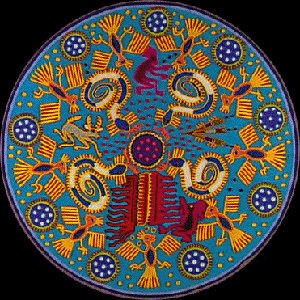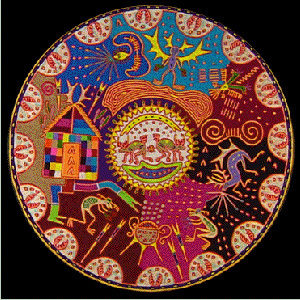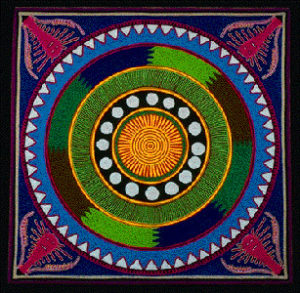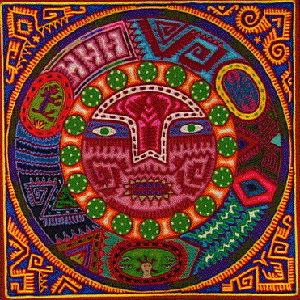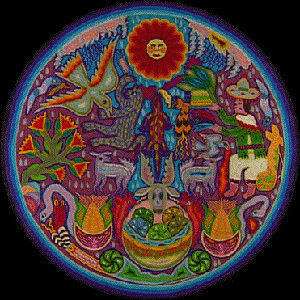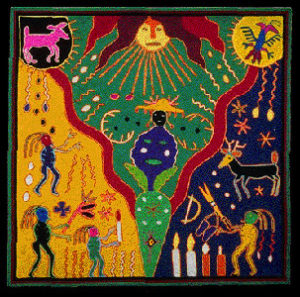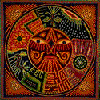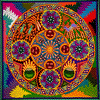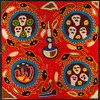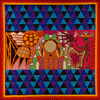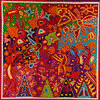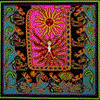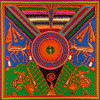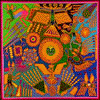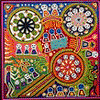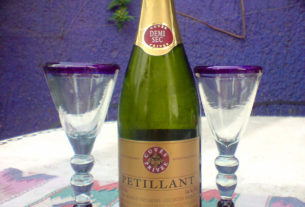The Huichol Indians, whose pre-Hispanic culture still survives in the remote Sierra Madres ranges, live a life woven of magic and sacred mythology. Believing themselves to be that part of creation which entertains the Gods, Huichols are sustained by their earthly representatives – corn, peyote and the deer – thus symbolically renewing their divinity daily.
These women and men keep alive the ancient traditions which remain a precarious reality for an indigenous people still relatively unaffected by Western civilisation. But, encroaching paper mills, airstrips, and government forces are rapidly altering this. Soon, all that will be left of this so-called “primitive” culture will be memories and the yarn paintings surviving in the hands of collectors.
Shamanic art originated with prayer bowls placed in caves as offerings. Whatever the size, the yarn paintings are personal interpretations of some aspect of Huichol relationship to the Gods. In this land of canyons, sparse rainfall, and uncertain crops, these Indians depend on their close psychic connections with Nature to survive.

Called “nierikas”, or mirror images of God, these art pieces are creative manifestations embodying the Huichol belief that we all make our own realities. Such works, empowered by the visionary cactus, peyote, are magical talismans which return to our lives a fusion with those natural forces we have lost.
These paintings are part of the ongoing collection of Maria von Bolschwing, curator of the Huichol Art Center. She lives in Mexico and has worked with the Huichols for the last 25 years. Originally a native of South Africa, Maria has lectured on and exhibited ethnic art in Europe, Africa and the United States.
All paintings shown here are approximately 23″ x 23″, unless otherwise noted. They are traditionally made of yarn, board and beeswax.

By Maria von Bolschwing and adapted here from her Huichol Art Center Site with her kind permission.

